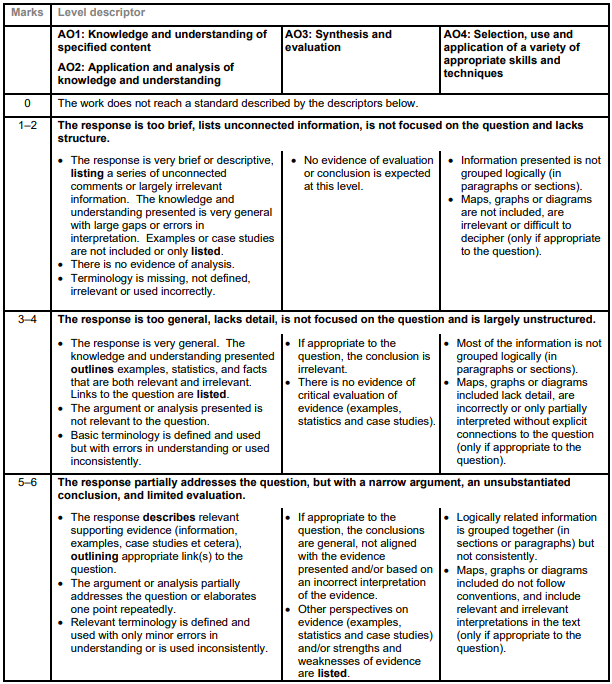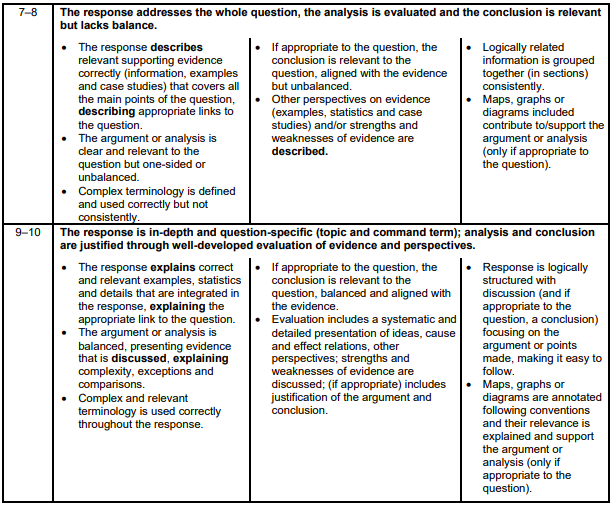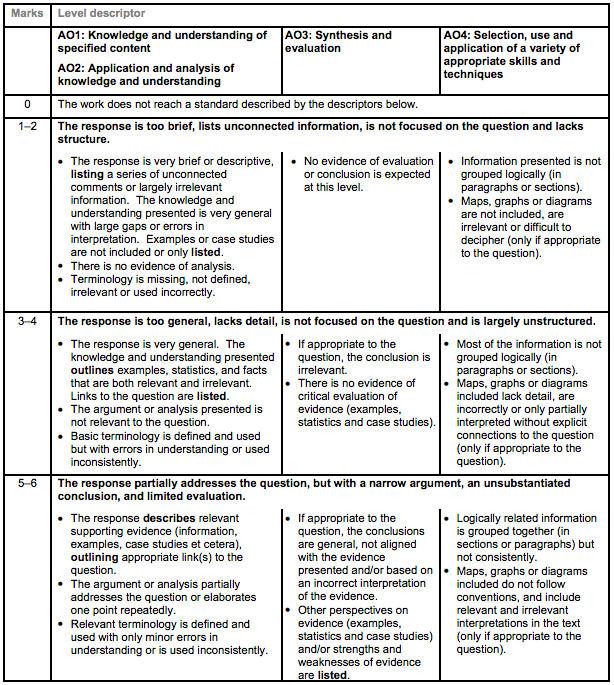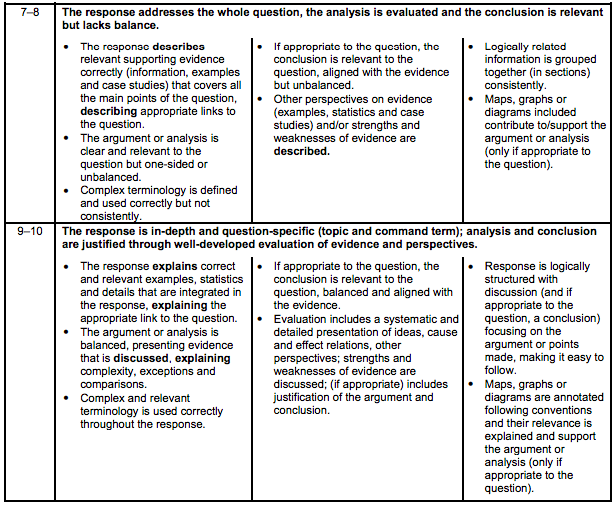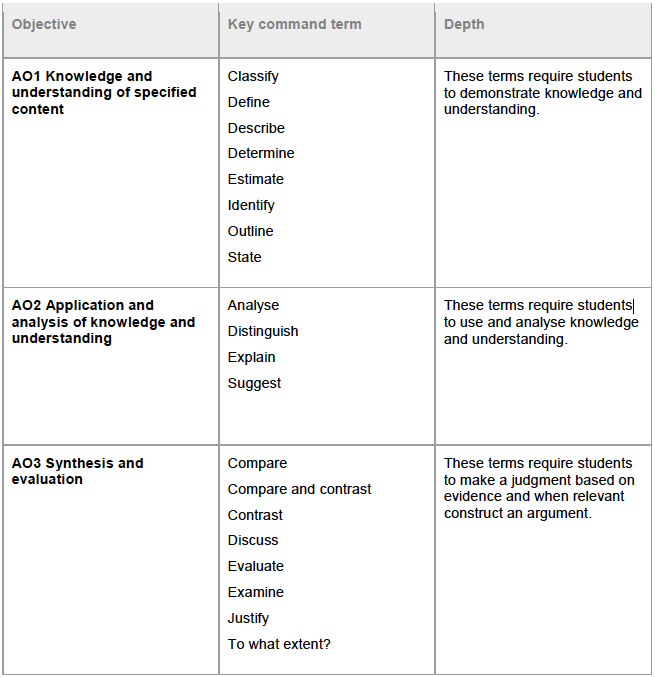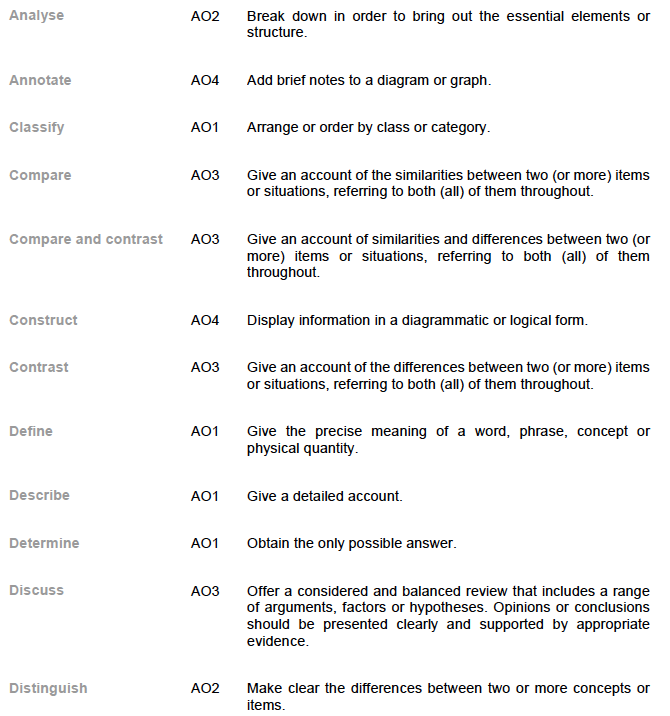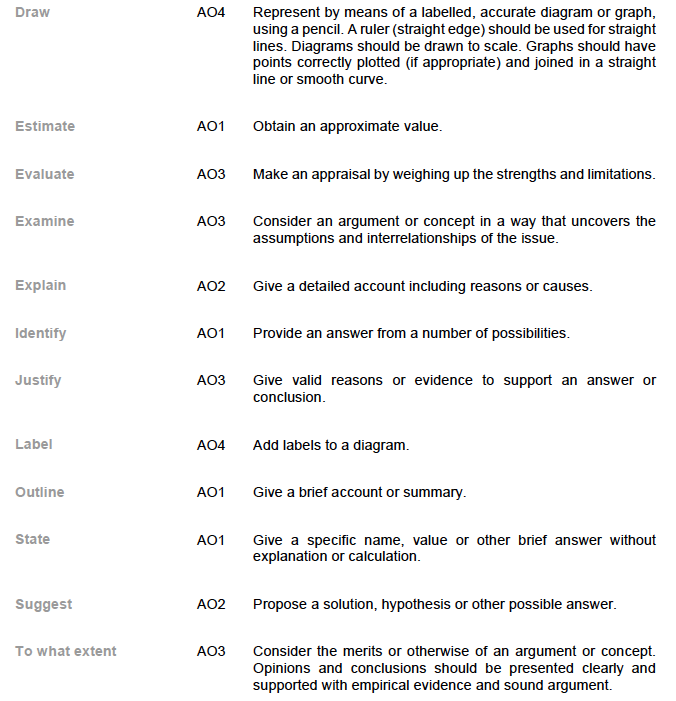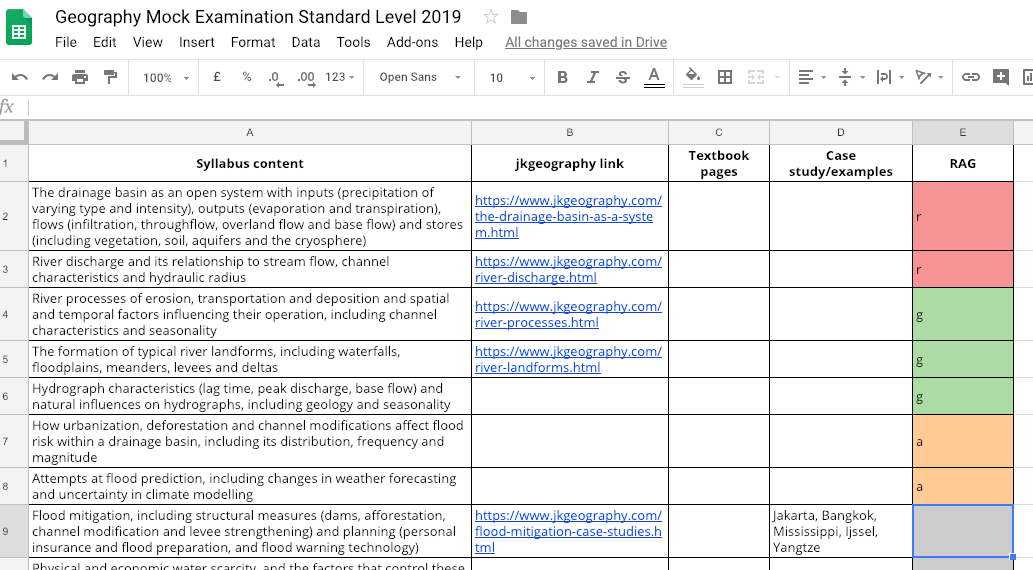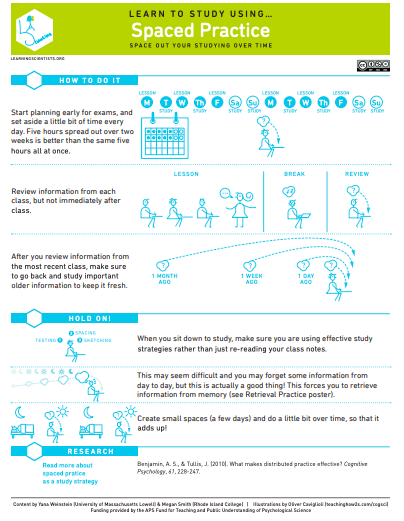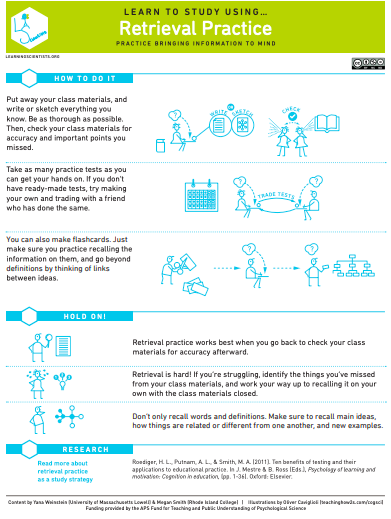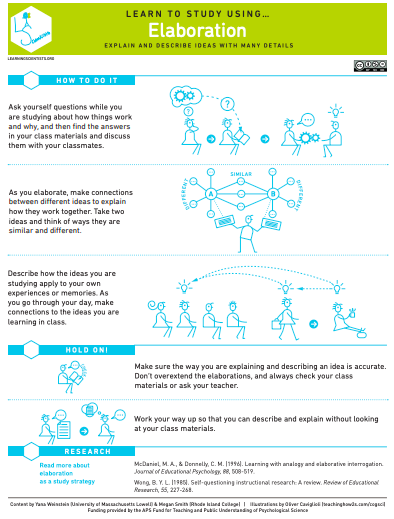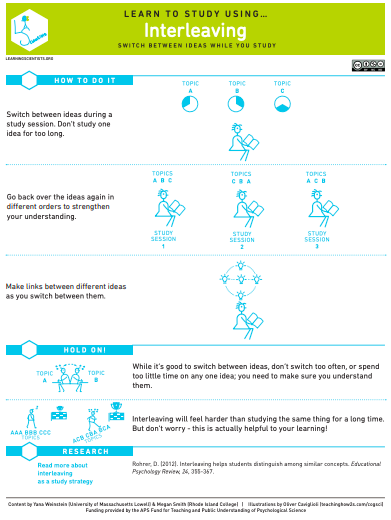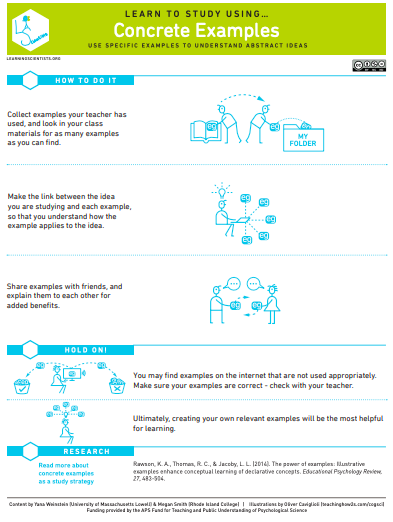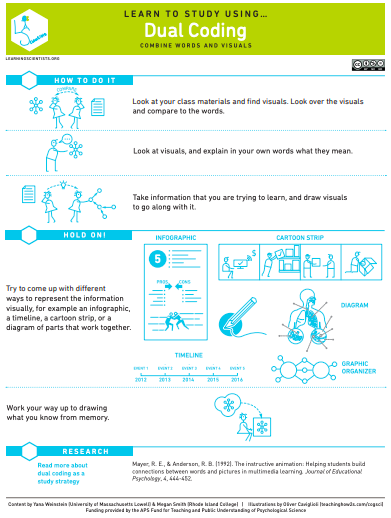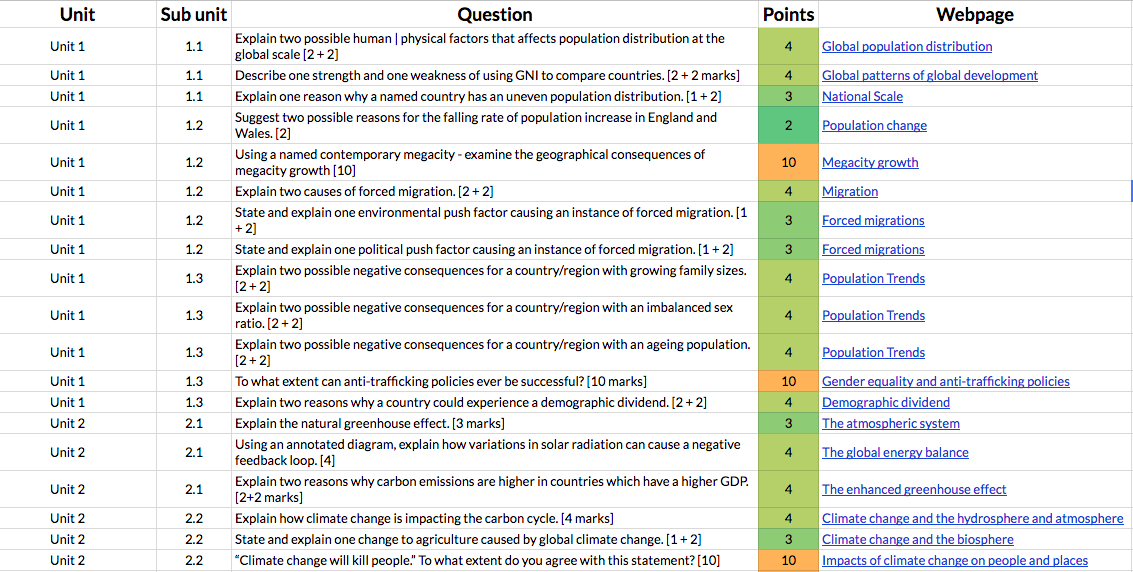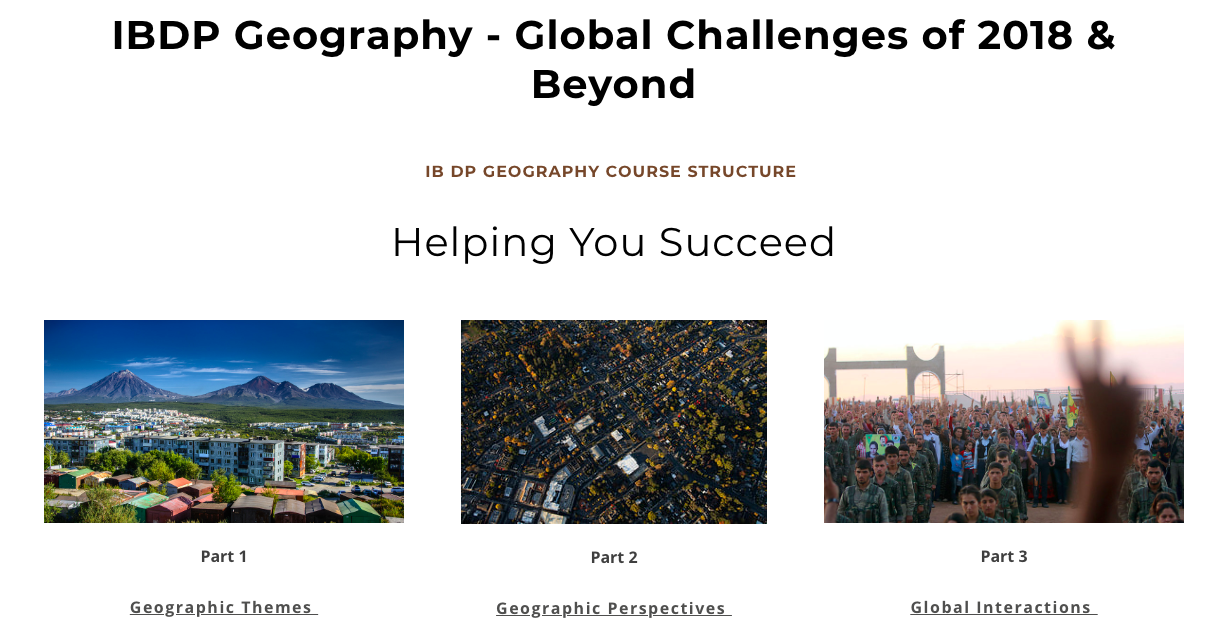-
MYP
- Home
-
IGCSE
- Course information
-
Physical: Hazardous environments
>
- Distribution of tectonic hazards
- Causes of tsunami
- Measuring earthquakes
- Earthquake case study 1: Haiti
- Earthquake case study 2: Christchurch
- Why do earthquakes do more damage in LICs than in HICs?
- How are volcanic eruptions measured?
- Tropical storms - distribution
- Causes of tropical cyclones
- Tropical cyclones - case study
- Why live in hazardous areas?
-
River Environments
>
- Hydrological cycle
- River basins
- Factors affecting river regimes
- Fluvial processes: erosion
- Fluvial processes: weathering and mass movement
- Fluvial processes: transportation and depositon
- River features and their formation
- How rivers change from source to mouth
- Uses of water
- Water pollution
- Water supply
-
IBDP
-
Changing population
>
- Global patterns of economic development
- Physical and human factors affecting global population distribution
- Case study 1: China
- Case study 2: Niger
- Demographic transition
- Megacity growth
- Forced migration and internal displacement
- Ageing populations
- Pro-natalist and anti-natalist policies
- Gender equality policies
- Trafficking policies
- The Demographic Dividend
-
Global climate vulnerability and resilience
>
- Atmospheric system
- The energy balance
- Changes in the energy balance
- The enhanced greenhouse effect
- Climate Change and the Hydrosphere, Atmosphere and Biosphere
- Impacts of climate change on people and places
- Disparities in exposure to climate change risk and vulnerability
- Government-led adaptation and mitigation strategies
- Civil society and corporate strategies
-
Global resource consumption and security
>
- Progress towards poverty reduction
- Measuring trends in global consumption
- Global patterns and trends in the availability and consumption of water
- Global patterns and trends in the availability and consumption of land/food
- Global patterns and trends in the availability and consumption of energy
- Water food and energy nexus
- Recycling and waste
- Malthus vs Boserup
- Resource Stewardship strategies
- Sustainable Development Goals
-
Freshwater - drainage basins
>
- The drainage basin as a system
- How rivers change from source to mouth
- River discharge
- River processes
- River landforms
- Factors affecting flood risk
- Attempts at flood prediction
- Flood mitigation
- Flood mitigation case studies
- Water scarcity
- Agricultural activities and water quality
- Pressures on lakes and aquifers
- Internationally shared water and conflict
- Water management: participation of local communities
- Dams as multi-purpose schemes
- Water management: Integrated Drainage Basin Management (IDBM)
- Managing wetlands
-
Leisure, Sport and Tourism
>
- Growth and purpose of leisure time
- Categories of tourism and sport
- Economic development and participation
- Factors affecting personal participation
- Factors affecting growth of tourism hotspots
- Spheres of influencee
- Factors affecting a national sports league
- Festivals
- Niche national tourism strategies
- Role of TNCs
- Tourism as a national development strategy
- International sporting events
- Consequences of unsustainable growth
- Sustainable tourism
- Future international tourism
- Political and cultural influences on sport
- Extended Essay in Geography >
- Skills/concepts >
-
Changing population
>
- Geography and ToK
- Theory of Knowledge
Mock examinations for Geography
Standard Level
Paper 1
Time allowed 1 hour 10 minutes
SL weight 35%
35 minutes per option question
Each option has a structured question and one extended answer question from a choice of two.
20 (10 + 10) marks per option
Total 40 marks
The paper will include questions on each of the following. You should only answer the two questions for the topics we have studied (bold type):
Paper 1
Time allowed 1 hour 10 minutes
SL weight 35%
35 minutes per option question
Each option has a structured question and one extended answer question from a choice of two.
20 (10 + 10) marks per option
Total 40 marks
The paper will include questions on each of the following. You should only answer the two questions for the topics we have studied (bold type):
- Freshwater—drainage basins
- Oceans and coastal margins
- Extreme environments
- Geophysical hazards
- Leisure, tourism and sport
- Food and health
- Urban environments
Paper 1 - Generic mark scheme for 10 mark questions
Paper 2
Total 1 hour 15 minutes
SL weight 40%
Paper 2 Section A
Three structured questions, based on each SL/HL core unit
30 marks
Paper 2 Section B
Infographic or visual stimulus, with structured questions
10 marks
Paper 2 Section C
One extended answer question from a choice of two
10 marks
Total 50 marks
Total 1 hour 15 minutes
SL weight 40%
Paper 2 Section A
Three structured questions, based on each SL/HL core unit
30 marks
Paper 2 Section B
Infographic or visual stimulus, with structured questions
10 marks
Paper 2 Section C
One extended answer question from a choice of two
10 marks
Total 50 marks
Paper 2 - Generic mark scheme for 10 mark questions
Revision - the basics
1. Know what to expect
a) Make sure you know what you need to know:
- What's on the exam (see above for topics and areas)
- What kind of questions (see above)
- Timings etc (how many minutes per mark? How should you plan your time?)
- What is being assessed - see Assessment Objectives below
Assessment Objectives for IB Geography
| geo_subject_guide.pdf | |
| File Size: | 2759 kb |
| File Type: | |
b) Make sure you understand the command terms you are likely to face in the examination. See below:
c) Plan and audit what you know and what you need to focus upon in your revision. You could use a traffic light (RAG) system. A possible resource is below:
2. Make revision active
- Study should be chunked and include breaks
- Each student will have a different style but “just reading my notes” will never be the most effective one - make learning active.
- Make sure you are clear on what you need to know and be able to do
- Look after yourself - make sure you are thinking about all of the things below
- Sleep
- Nutritious /healthy meals
- Balanced lifestyle - exercise, fun, social life
- Sleep
- ASK FOR HELP if you need it
There are many ways to revise effectively and you should find the approach which is most effective for you. Some resources are below. The key idea is to make sure that you are PROCESSING the material that you are study and not just passively staring at your notes!
|
|
|
Useful Geography resources
Your primary source of content should be your own notes, this website and the textbooks and revision guide that you already have. The websites below are not tailored for YOU and for what we have studied which will mean that the case studies will not always match those we have done.
|
Geography All The Way website - you will need to use the log in details to access the site that have been shared with you. Remember to use the case studies that WE STUDIED rather than any different ones that you might find here! The link on this image takes you straight to a useful spreadsheet with lots of exam questions you can try. |
